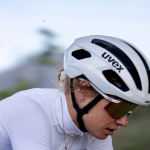Retail continues to struggle in the throes of an economy that is not conducive to consumer spending, but same-store sales for the fiscal month of August painted a slightly more optimistic picture regarding outlook for Holiday 2009 — despite representing the 12th straight month of regression.
Analysts said a later back-to-school and an improving economy pushed retail comps to the best results since September 2008, but it’s abundantly clear that discretionary income remains at a premium as consumers across the board continue to key on deep discounts and clearance sales at off-price retailers.
The International Council of Shopping Centers said same store sales for August were “considerably stronger” than expected as overall comps slid only 2.0%, supplemented partially by a 50 basis point-boost from a calendar shift. The ICSC, which monitors data from 32 retail chain stores, said a few select performers, including TJX, Aeropostale and Gap, propelled results for the month.
Mike Niemira, chief economist for ICSC, said the trend shift “may indeed be the start of a recovery for the industry.”
Expectedly, department stores continued to flounder, with high-priced apparel specialists Saks and Neiman Marcus bringing up the rear yet again, posting comp losses of 19.6% and 16.6,% respectively. Saks’ dismal results, which fell almost three percentage points on a month-over-month basis, were even worse than analysts expected. Nordstrom (-7.6%) remained a relatively stable performer in the sector while Macy’s posted a worse-than-expected drop of 8.1%. Overall, the ISCS reported department stores dipped 7.3% on a 12.3% decline from the luxury sector.
Among mid-tier department stores, Kohl’s handily exceed expectations by posting a fractional comp store sales gain on strength from it’s accessories and women’s segments. JC Penney posted a decline of 7.9%, which was in line with management’s guidance.
JC Penney management said the retailer saw strength from its women’s segment and boys and girls apparel, which benefited from a later BTS selling period. The tax-free shift that saw shopping periods move from July to August also provided a boost for JCP.
The teen segment continued to struggle as continued weakness from Abercrombie & Fitch, American Eagle and Zumiez — among others — more than offset consistent growth from The Buckle and Aeropostale. Most notably, Abercrombie, which continues to price it’s apparel at comparatively higher price points, plummeted 29.0% for the month. Aeropostale, which has recently focused on featuring lower price points, outperformed analysts predictions by posting a 9.0% improvement for the quarter.
The lone gain for the month came from the discount/off-price sector, which not surprisingly continued to see strength as consumers scour the market for discounts and clearances. TJX Cos, which operates the Marshalls and TJMaxx stores, exceed analysts’ expectations by posting a 5.0% improvement for the month that was driven by an “extremely high” customer traffic count. Ross Stores continued to show strength as well, exceeding analysts’ expectations by posting a comp gain of 6.0% on strength from the southeast region. Management for Ross said the strongest performing categories for the month were dresses and shoes. Comp sales at high-end discounter Target slipped 2.1%, but were significantly better than the 5.1% decline forecast by analysts.
Wholesales clubs, including BJ’s Warehouse and Costco, took a hit from declining fuel prices, although management at Costco noted that sales of flat screens TVs were up 20% – which could be an indication that spending habits are finally starting to loosen up. It should be noted that television sales have been remarkably resistant to the weak market, however.
Also contributing to overall comps was the fact that the month was slightly warmer for most of the country. According to Weather Trends International, Inc. the month trended warmer than last year’s fiscal August for 57% of the U.S. However, cooler weather in the West likely contributed to increased demand for apparel, said the ICSC.
Based on retail point-of-sale data compiled by SportScanINFO, The SportsOneSource Group is estimating that comparable store sales of Sport Footwear declined in the mid-single-digits for the month, with comparative strength at full-line sporting goods offsetting sharper decreases across all other channels tracked by the service. Mall retailers improved sequentially from the high-teen declines in July to post a mid to high-single-digit net sales decline in August. Sport Footwear growth slowed considerably in the family footwear channel, with net sales up in the very-low-singles, reflecting a low-single-digit comp sales decline, based on the SportsOneSource estimates.
Athletic Footwear net sales were down in the low-single-digits for the month, according to the SSI data, but Outdoor Footwear net sales were up in low-single-digits.
Net sales of Sport Apparel excluding Swimwear were up in very-low-single-digits for the month, with comparative strength at full-line sporting goods and mid-tier department stores again offsetting weakness elsewhere.
In the other major category affecting the sports and outdoor market for back-to-school, non-Technical Daypacks sales slipped in mid-single-digits despite an increase in average selling prices.
In related news, a report by the Labor Department said the unemployment rate has risen to 9.7% – the highest in 26 years. However, U.S. employers eliminated a fewer-than-expected 216,000 jobs in August.
The ICSC forecasts retail sales to slip by 2% for fiscal September, but suggested outlook for the back end of 2009 was relatively positive.
The Buckle continued to show strength in August- albeit at a slower rate than analysts expected. Management for the mall-based retailer said comps improved by 3.6% on total revenues of $84.5 million 9% better than last year’s fiscal August.
On a pre-recorded call, management for the mall-based retailer said men’s sales, which represented 36.5% total sales, slipped 3% despite strength from denim, outerwear and footwear. Price points for the men’s side were up about 5% for the month.
The women’s side, which accounted for about 63.5% of sales, was up about 18% on strength from denim, woven and knit tops, sweaters, outerwear, accessories and footwear price points were up about 2%.
Zumiez, Inc. reported comps fell 12.1% for August on net sales that inched up 0.2% to $51.7 million from $53.2 million in the year-ago period.
July weekly comps were down 11.5%, down 14.3%, negative 8.6% and down 14.1% for weeks one through four, respectively. On a pre-recorded call, CFO Trevor Lang said the decrease in comparable-store sales was partially due to the back-to-school shift.
Mr. Lang said that a combination of August and September sales will be a better reflection of how Zumiez same-store sales performed for back-to-school due to the later Labor Day holiday this year, causing a number of states to move their back-to-school starting dates.















